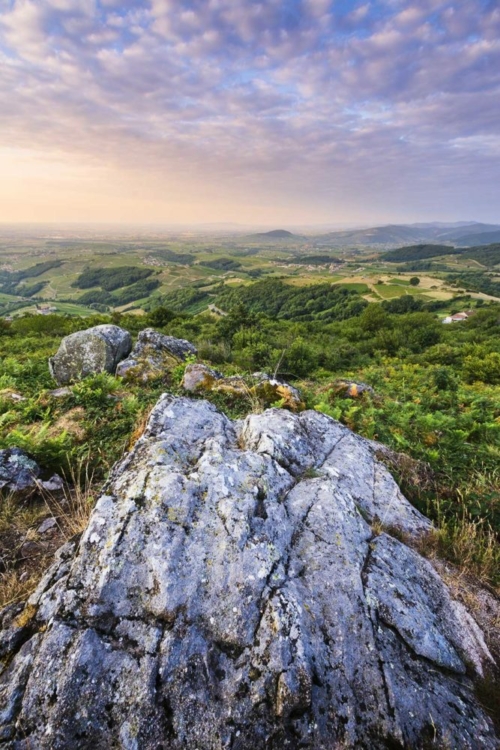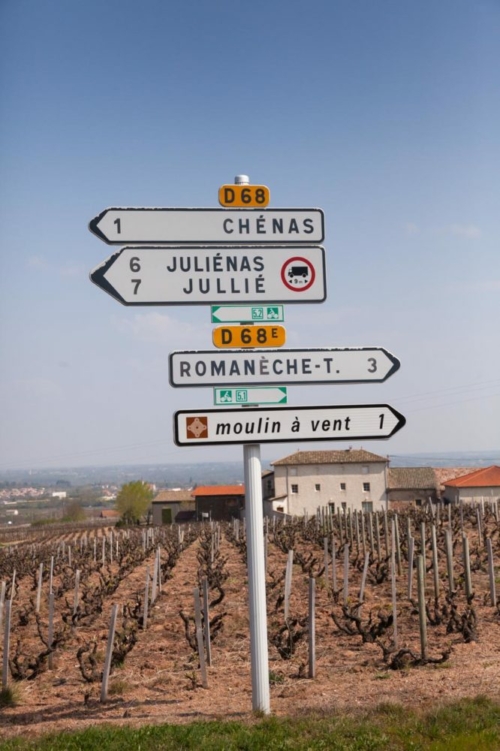I distinctly remember the intimidation of the French wine aisle at my local wine shop when I was in my 20s. This was before natural wine had much of a presence, and the rows of labels with stately château and far-too-many vowels in their name had me simultaneously overwhelmed and unimpressed. It was just easier to glide over to Italy — where I at least knew a few place names — or Spain where it was uncommonly cheap and the labels were a riot of color. Or better yet, the Americas, where the headline was the grape. Without a gateway to French wine, I was never going to become a Francophone.
I suspect that’s still the case for many wine enthusiasts, perhaps including you. No one needs to learn French wine. But as someone who has, let me say this: you are missing out if you ignore France.
Fortunately, there is a great starting point: Beaujolais. It is where I started to “get” French wine, and it continues to be a refuge from the elitism of the wine world. You don’t need to invest a lot of time and money and patience to love Beaujolais, just a sense of adventure and the ability to commit two or three place names to memory, for the best Beaujolais — without a doubt — comes from the 10 cru appellations (and this being France, they don’t usually say “Beaujolais” on the label).
Let me help you sort it out.
7 Reasons Beaujolais is an Ideal Gateway to French Wine
1. The 10 Cru Villages
It begins and ends with the 10 appellations known as the Cru du Beaujolais: Saint-Amour, Juliénas, Chénas, Moulin-à-Vent, Fleurie, Chiroubles, Morgon, Régnié, Côte de Brouilly and Brouilly. Visiting this area, you can see their differences manifest in the landscape — from Fleurie’s chapel-topping slope to the wind-beaten ridge of Moulin-à-Vent — and what’s exciting is that these differences can often be detected in the glass, even by newcomers.
2. It is Gorgeous There
Champagne has panache, Burgundy and Bordeaux have stature, but Beaujolais has beauty. I often waste hours daydreaming of my return to those green slopes.
3. Gamay Noir
The red grape of Beaujolais is like a quirky cousin of Pinot Noir: lean and acidic, characterized by red currants and watermelon tones, but with an amiability that makes Pinot seem stoic. Gamay Noir wants to party.
4. Granite Rocks
If you are just beginning your journey toward understanding the role soil plays in wine, Beaujolais is an excellent case study. Many of the simpler wines come from vineyards rooted in clay which yields a fruity but often flat profile. However, up in the granite- and schist-based hills of the Cru du Beaujolais, the wines take on a much more appealing texture that lingers on the aftertaste.
5. Home of Natural Wine
However you define it, natural wine is here to stay, and it owes a debt of gratitude to a group of revolutionary Beaujolais producers in the 1970s who thumbed their noses at the industrialization of Beaujolais’ wine industry and focused on minimal-intervention winemaking in their work. The results set off a movement, and today, the Cru du Beaujolais remains a stronghold for organic and biodynamic wines.
6. It’s Perfect for Thanksgiving
Pairing wine with Thanksgiving sucks. So many different dishes, so many different tones to mesh with. Just throw in the towel and buy a trio of Cru du Beaujolais wines for the table. Works everytime.
7. Still Affordable
Another reason I often left the French aisle? Sticker shock. While demand for Beaujolais has increased over the last 10 years, these wines are still remarkably well priced given the quality.






